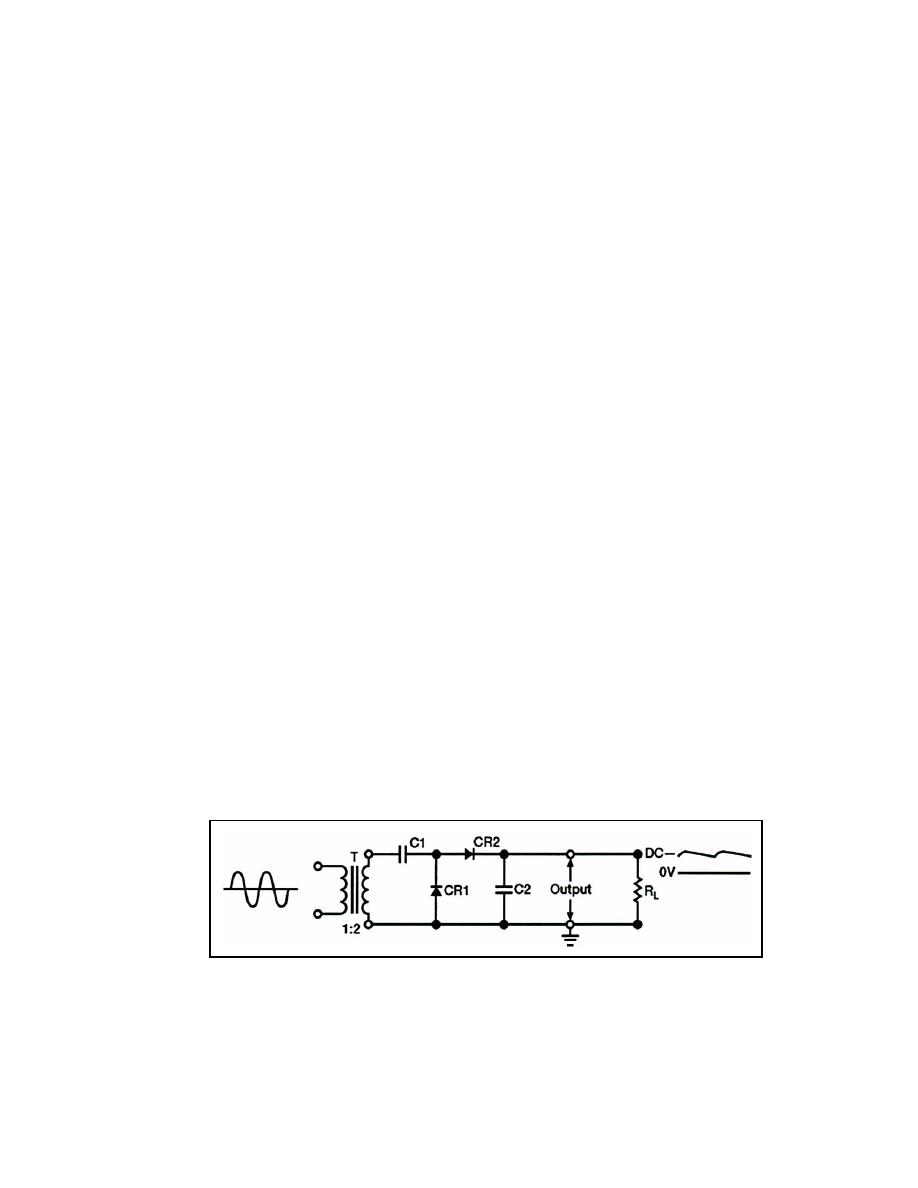
______________________________________________________________ Solid State Power Supplies
VOLTAGE MULTIPLIERS
4-120. Another method for increasing voltages is known as voltage multiplication.
VOLTAGE MULTIPLIERS are used primarily to develop high voltages where low current
is required. The most common application of the high voltage outputs of voltage
multipliers is the anode of CRTs that are used for radarscope presentations, oscilloscope
presentations, or TV picture tubes. The DC output of the voltage multiplier ranges from
1,000 volts to 30,000 volts. The actual voltage depends upon the size of the CRT and its
equipment application.
4-121. Voltage multipliers may also be used as primary power supplies where a 177-volt
AC input is rectified to pulsating DC. This DC output voltage may be increased (through
use of a voltage multiplier) to as much as 1,000 volts DC. This voltage is generally used as
the plate or screen grid voltage for electron tubes.
4-122. Remember, when voltage is stepped up the output current decreases. This is also
true of voltage multipliers. Although the measured output voltage of a voltage multiplier
may be several times greater than the input voltage, once a load is connected the value of
the output voltage decreases. Any small fluctuation of load impedance also causes a large
fluctuation in the output voltage of the multiplier. For this reason, voltage multipliers are
used only in special applications where the load is constant and has high impedance or
where input voltage stability is not critical.
4-123. Voltage multipliers may be classified as voltage doublers, triplers, or quadruplers.
The classification depends on the ratio of the output voltage to the input voltage. For
example, a voltage multiplier that increases the peak input voltage twice is called a voltage
doubler. Voltage multipliers increase voltages through the use of series-aiding voltage
sources. This can be compared to the connection of dry cells (batteries) in series. The
figures used in the explanation of voltage multipliers show a transformer input, even
though for some applications a transformer is not necessary. The input could be directly
from the power source or line voltage. This, of course, does not isolate the equipment from
the line and creates a potentially hazardous condition. Most military equipment uses
transformers to reduce this hazard.
4-124. Figure 4-44 shows the schematic for a half-wave voltage doubler. Notice the
similarities between this schematic and those of half-wave voltage rectifiers with which
you are already familiar. In fact, the doubler shown is made up of two half-wave voltage
rectifiers (C1 and CR1 make up one half-wave rectifier and C2 and CR2 make up the
other).
Figure 4-44. Half-wave Voltage Doubler
4-125. The dark lines in Figure 4-45, view (A) show the schematic of the first half-wave
rectifier. The dotted lines and associated components represent the other half-wave rectifier
and load resistor. Notice that C1 and CR1 works exactly like a half-wave rectifier. During
23 June 2005
TC 9-62
4-39


 Previous Page
Previous Page
